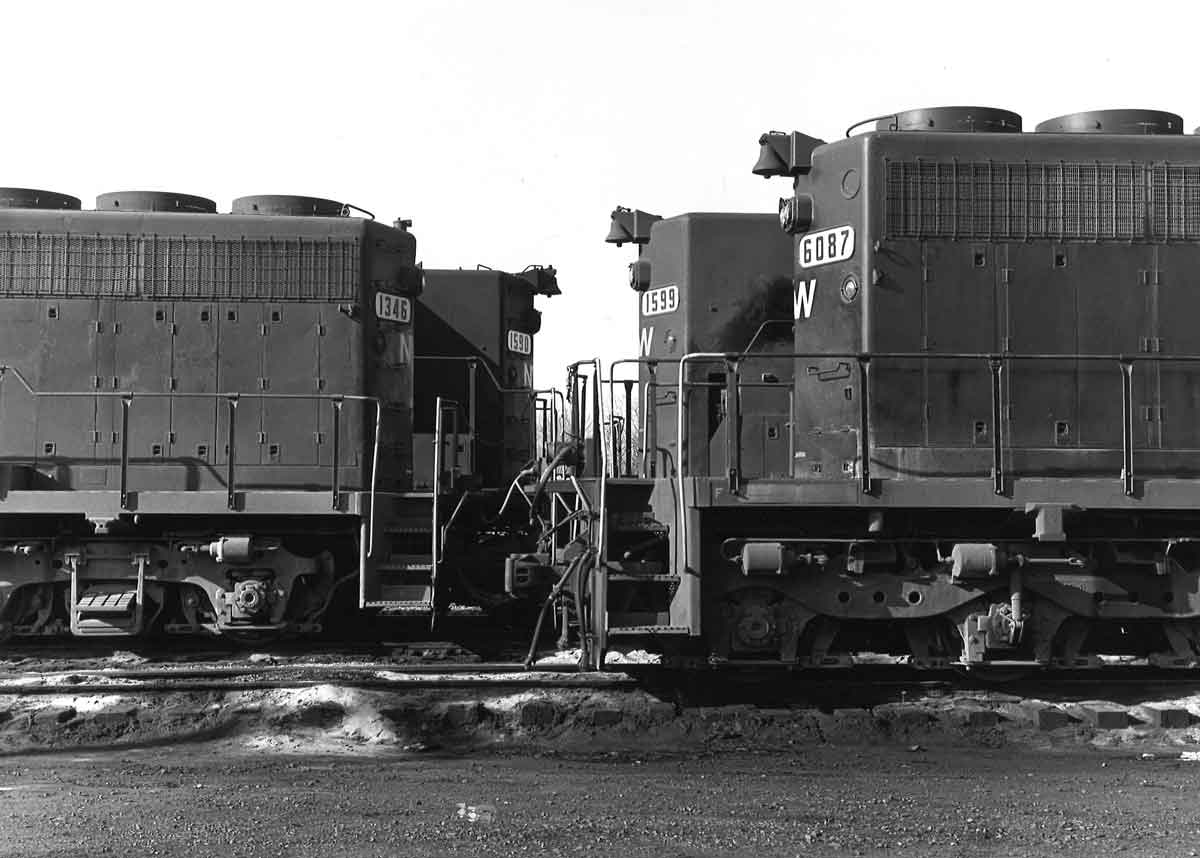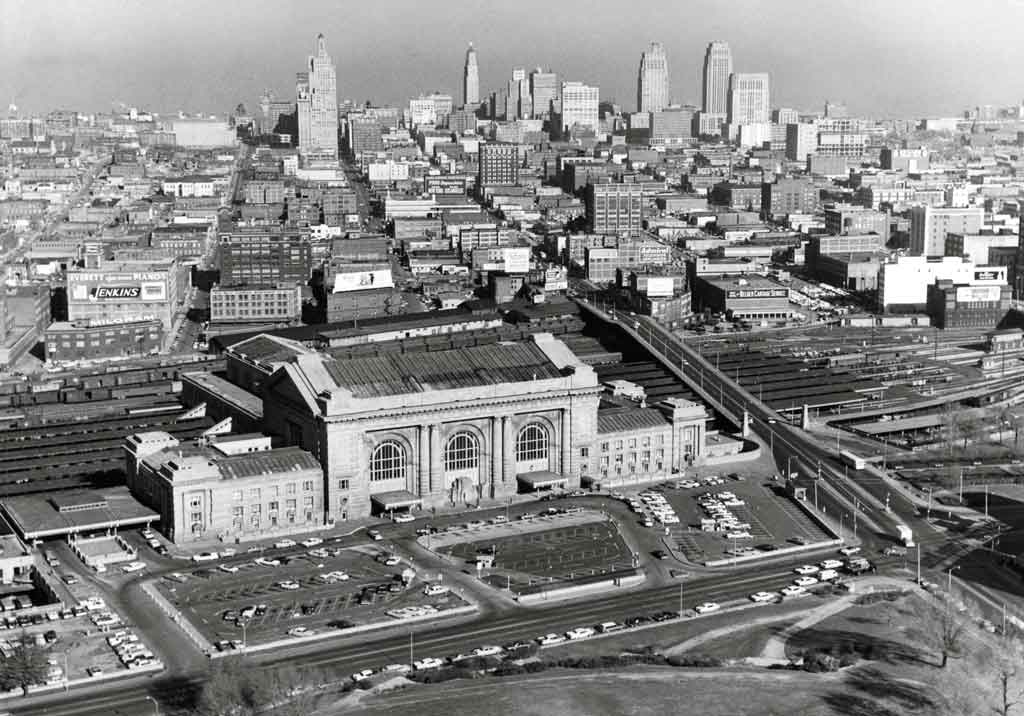July started for me as a Norfolk & Western Railway management trainee performing construction inspection on a coal-mine branch being built in far western Virginia. Although a long way from my native upper Michigan, I was employing my new civil engineering degree toward expected ends. However, on July 10, the first topic of discussion when my three fellow inspectors picked me up in Richlands for our carpool over the mountain to Vansant was that back in Bluefield, W.Va., the company’s clerks had gone out on strike. Interesting, we thought, but not relevant to our work. The strike would be over within a week, as they all were.
One week slipped into two, and then three. The occasional train passing through Richlands on the Clinch Valley District was capped by a red flag instead of a caboose, but otherwise the strike showed little to me. I knew that people from the Roanoke engineering department were now scattered between Kansas City and Norfolk doing activities definitely not in their job descriptions, but our construction continued unaffected. I started to feel I was missing the “show.” Finally, I got the call. Roanoke had decided that my none-too-strenuous inspection job did not require a 23-year-old in good health. I was told to fly to Buffalo the next day, August 7.
Acquired by N&W in its 1964 absorption of the NKP, Buffalo’s Bison Yard was then a joint operation between N&W and Conrail, with an N&W superintendent and Conrail maintenance responsibility. The mostly unionized Conrail maintenance force would not cross the N&W picket lines. To compensate, the N&W had earlier shipped up from Roanoke a former division engineer named Harry, who in turn had hired a small crew from a local contractor. I was to be Harry’s assistant.
Maintenance at Bison in the strike context actually meant fixing the track from the previous day’s mishaps. The quickly trained N&W management crews switching the yard worked safely, but overturned rails and sprung switches were still common. Soon, swinging a spike maul came naturally to me. The upstate New York summer weather was idyllic and life wasn’t bad. But the folks back in Roanoke were not happy with N&W having to do Conrail’s work, so one morning, with the strike approaching its 60th day, a group of Conrail management trainees materialized at Bison. None of them seemed overjoyed with becoming part of a glorified section gang, but no matter; I was out of there.
My new assignment was at Bellevue, Ohio, the hump-yard heart of N&W’s ex-Nickel Plate lines. Now I was one of those management yard crews, learning Bellevue’s veins. Two cars, one car, that’ll do — the new work came easily, but I still felt I was missing out as I saw former co-workers leaving town on big black diesels. The yard jobs had somewhat regular hours, but I wanted the high iron. Soon my wishes hit the right ears and I found myself the “conductor” on freight BC-1 heading for Chicago one morning.
My engineer, Lanny, was a mechanical department manager who knew how to handle our SD40-GP9-SD35 consist, so all I mostly had to do was enjoy the view. On reaching East Wayne Yard near Fort Wayne, Lanny told me to grab our orders. I looked out and saw someone standing next to the track with a hoop. I had never even seen it done before, but I reached out and snared them like an old-time boomer. I was in the big show at last.
Our return trip on CB-12 was more eventful. In Hammond, Ind., we went into emergency and Lanny told me to go back and take a look. I didn’t have a radio and not much of an idea of how to fix whatever I might find, but off I trudged. Luckily it was daylight. As I hiked back, I passed several crossings where motorists were becoming agitated. Finally at the rear car, a mile from the engines, I came across something even I should be able to manage: separated air hoses. I closed the angle cock at the rear of the next car forward and then tried to couple the hoses. No go — with the slack stretched I could not get them to mate. Then, as I was trying again, I heard the train start moving. Not wanting to be left in Hammond, I grabbed onto the last car and wondered what the heck Lanny was doing. A few miles later we stopped and I trekked up to the engines. Lanny explained that he had decided to move out as soon as the air pressure came up to get away from the crossings, expecting that I would at least be smart enough to hop on. We soon met a westbound whose crew fixed us up to continue to Bellevue.
The rest of my trips were east of Bellevue, mostly with Wes, a safety department manager who had once been a real engineer and road foreman and who was full of Nickel Plate stories. My workplace became the Lake Erie Division’s rolling countryside with glimpses of its namesake lake, Cleveland with its parallel rapid-transit line, suburban Lakewood with its 27 grade crossings, and Erie with its street-running. Trips to Buffalo and turns to places like Lorain, Cleveland, and Conneaut showed that the region’s heavy industries had not yet fully rusted away. On one trip while waiting for a meet, my engineer and I might have even contributed to a new generation of railfans, based on the excited reaction of a young boy as we climbed off the engine and walked to a nearby Dairy Queen.
Toward the end of September, the weather began turning frosty and even I started longing for normalcy, especially for regular sleep hours. Legal and political maneuvering finally resulted in a congressionally imposed end to the strike on September 30. Around 11 p.m. on the 29th, Wes and I found ourselves waiting an unusually long time for no apparent reason to get a clear signal from Conrail at Buffalo Junction before heading west. By the time we got to Bellevue, it was daylight and the union crews were back to work, and there was a bus waiting to take me to the Cleveland airport.
The Norfolk & Western later commissioned a book describing what its people did and the productivity gains it realized during the strike. Ironically, a strike over clerical staffing disagreements ended up helping to prove that railroads could operate overall with many fewer people. My continuing railroad career is still intrinsically interesting, but nothing has yet matched the summer of ’78.
First published in Fall 2009 Classic Trains magazine.
Learn more about railroad history by signing up for the Classic Trains e-mail newsletter. It’s a free monthly e-mail devoted to the golden years of railroading.















I remember that strike. I was working for the ICG in intermodal marketing. The N&W kept operating through the strike and, IIRC, it went on for over 70 days.
Finally, the unions broadened the strike to other railroads in order to get government intervention. So now the ICG workers were on strike. I was assigned to a clerk position at the Chicago intermodal terminal.
Memories: 1) On the 1st morning I went in to my regular job in a high rise on Michigan Ave. in Chicago. A female clerk had just come on in and started working her job. She wanted to be on strike about as much as I wanted a punch in the nose. So, I was standing there telling her: “You can’t be here. You’ll get in trouble. You have to leave.” 2) Later in the day I was sent out to work in the intermodal terminal. I was kind of nervous about driving across a picket line in Chicago. Then I watched a tractor trailer ahead of me go across. He just put the pedal to the metal and went right at the pickets. They wisely scattered and I just followed him in. 3) Then I was sent back out to bring in food. We were going to be there a while. I got out with no problem. But I got jeers bringing it back in. 4) By 3rd and last day everyone was tired of it. The pickets were no longer present. They just left their signs standing up. So I was checking in a UPS driver at the gate and he ask me “Hey, where are the pickets?” How would I know? 5) This was before cell phones. People would call in and ask us to give messages to the pickets. No, we won’t do that. 6) The pickets wanted to come in and use the restrooms. No.
The government did intervene and put an end to it. I don’t know how the issues were settled on the N&W.
Your article brought back a memory of my brief, strike-induced employment as a brakeman. I was an NYC Operating Management Trainee (about 10 years before you on the N&W). Shortly after the NYC+PRR merger, I was “working” in Richmond, IN when I got a call on Friday to be in Charleston, WV the next evening. No railroad employees were on strike but one industry’s employees were. Unfortunately, our crews wouldn’t pass through that industry’s property to reach another very good customer of ours.
Our crew consisted of a Road Foreman running the engine and acting a conductor. We three Management Trainees did all the cutting and coupling. It was bad enough that none of us knew any of the others but the job started at midnight on a foggy night in a small, unlit yard near the Kanawha River. Amazingly, we finished up by about 4 am with no one even injured.
Robert & John – Yes, life does take some strange turns: while at Columbia B School in 1964, I was hired for a summer job on the NYC by the System Superintendent to check every mile of the system, find every car on every siding and stay safe. This was before computers and NYC had no real idea of what cars were lying around their far flung system. Several weeks before I was to start, my Dad had a heart attack and I had to take over the family business….that switch put me on a totally different life eventually.
Robert – thanks for sharing your recollections as a management trainee on the N&W. I was almost one – I interviewed with the N&W in Roanoke after finishing my Navy commitment in 1972. Mr. Gearhart, with whom I interviewed, said there were currently no openings for management trainees, but to call back periodically and check, which I did. After several months of living off my folks, I decided to return to school on the GI bill and study accounting. About two weeks after classes started, Mr. Gearhart’s office called and said they had an opening; I thanked them but said I had moved on.
Reflecting on my “near miss”, it would probably have been the death of a great hobby if I had gone to work for the railroad in the operating department. As your article points out, it’s not a job; it’s a way of life.